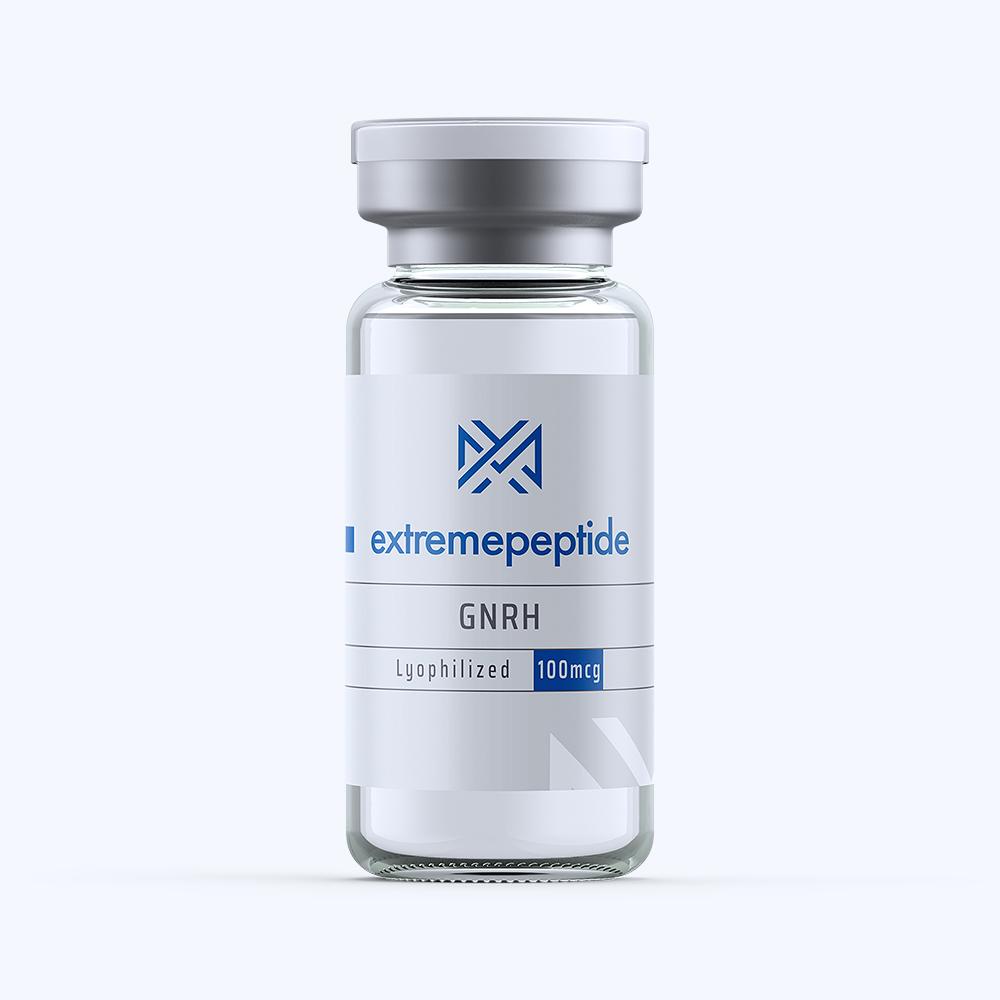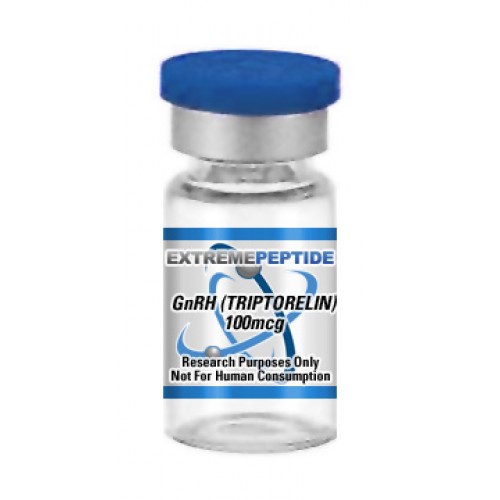The gonadotrophin-releasing hormone agonist GnRH (Triptorelin) is a peptide that is comprised of a chain of 10 amino acids. This structure enables it to be considered a decapeptide. It can sometimes be known as Diphereline, Gonapeptyl, Decapeptyl, and Variopeptyl. It possesses a molecular mass of 1311.5, and its molecular formula is C64H82N18O13.
GnRH (Triptorelin) and the Regulation of Hormones
GnRH (Triptorelin)’s primary method of functionality and operational mechanics according to scientific study that has been conducted on animal test subject relates to the pituitary gland. Located at the bottom of the hypothalamus at the base of the brain, this tiny gland more or less acts like the central command center for an animal test subject’s endocrine system, as it is responsible for regulating and controlling a host of systematic processes. Some of the processes it controls include:
- Regulation of growth
- Functionality of the thyroid gland
- Measures of pain relief
- Regulation metabolism
- Regulation of temperature
- Functionality of sex organs
Studies have indicated that GnRH (Triptorelin)’s functionality enables it to induce a constant stimulation of the pituitary gland in animal test subjects. As it does this, studies have indicated that its functionality causes the lowering of two key secretions that are expressed by the pituitary gland as a means of providing growth regulation.

The first of these secretions is luteinizing hormone. This particular hormone is charged with the regulation and control of estrogen production in female animal test subjects, and it is charged with the regulation and control of testosterone production in male animal test subjects. It also has been shown to play a vital role in the regulation and control of the reproductive process.
The second of these secretions is follicle-stimulating hormone. This is the hormone that is responsible for the regulation and control of the development, growth, and pubertal maturation within animal test subjects. Much like luteinizing hormone, it too plays a vital role in the regulation and control of the reproductive process.
The Results of this Process
In essence, because of the way in which GnRH (Triptorelin) has been shown to function, scientific study that has been conducted on animal test subjects has been able to determine that the peptide can be linked to several potentially positive processes relating to negative conditions spurred on by hormones.
The first of these processes involves GnRH (Triptorelin)’s possible role in aiding in the treatment of hormone-responsive cancers. This is primarily due to the fact that certain forms of cancers, such as prostate and breast cancers have been at least partially linked to the presence of luteinizing hormone when it is secreted – specifically, the levels of estrogen and testosterone levels that the secretion is shown to influence. Because GnRH (Triptorelin) has the capacity to inhibit the production of luteinizing hormones in animal test subjects, it has been thought that the presence of the peptide could be used in order to stem or slow the effects of the cancers that have been linked to the hormones’ secretions.
- Additionally, GnRH (Triptorelin)’s ability to inhibit the production of luteinizing hormone has been hypothetically linked to being an aid in the treatment of estrogen-dependent conditions.
- Two conditions particularly stand out in this regard. The first condition is known as endometriosis.
- This is a gynecological issue in which cells from the uterus lining appear and proliferate on the outside of the uterine cavity. This condition is marked by severe pain and in some cases, infertility.
- The second condition is known as uterine fibroid. This issue is marked by a benign tumor that originates from smooth muscle tissue and clusters within the uterus.
- This condition is typically marked by severe pain upon menstruation as well as painful sexual intercourse.
A third potential association regarding GnRH (Triptorelin) has to do with the treatment of precocious puberty. This is the hormone-related condition in which the onset of pubertal maturation occurs at an unusually early age. Because the peptide has shown an ability to inhibit the release of follicle-stimulating hormone, which regulates pubertal maturation in animal test subjects, it is thought that this inhibition can lead to a more grounded level of homeostasis within the animal test subject in terms of this form of maturation.
